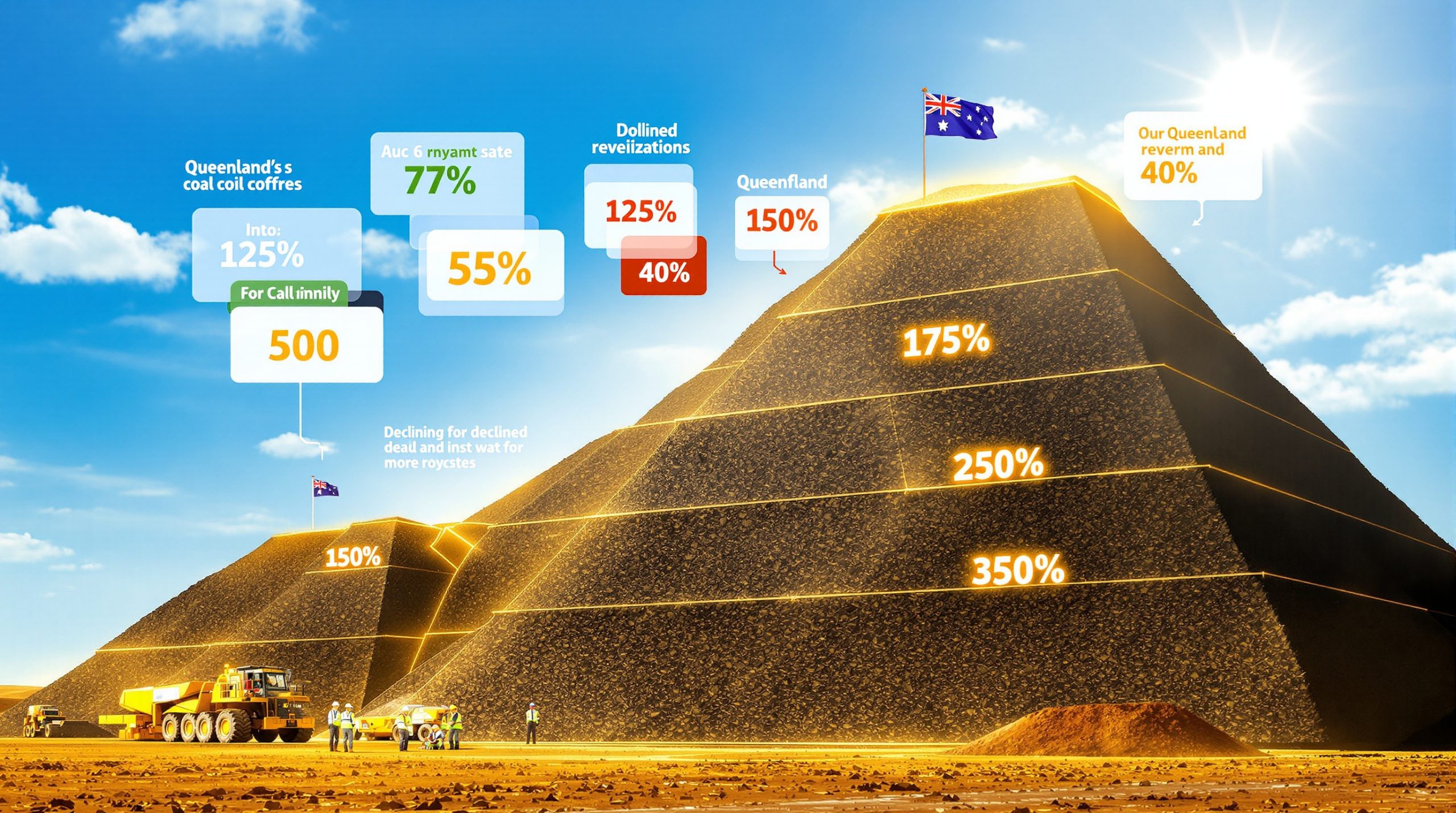How Supply and Demand Fundamentals Drive Oil Prices
The global crude oil market operates on basic economic principles, yet with complexities that make price forecasting challenging. Supply and demand factors remain the foundation of price movements, with several key elements driving market dynamics.
Global Oil Production Capacity
Current global oil production capacity stands at approximately 100 million barrels per day, with OPEC+ nations controlling roughly 40% of this output. This concentration of production power creates significant market influence, particularly from countries like Saudi Arabia, which maintains about 2 million barrels per day in spare capacity.
W. Schreiner Parker, Managing Director at Rystad Energy, notes: "Saudi Arabia's spare capacity of 2 million barrels/day remains critical for stabilizing markets during supply shocks." This buffer capacity allows for rapid response to market disruptions, acting as a crucial balancing mechanism during supply crises.
Production capacity constraints in non-OPEC nations further amplify the influence of major producers. When demand approaches global capacity limits, crude oil prices typically experience upward pressure as the market perceives increased supply risk.
OPEC+ Influence on Market Stability
The OPEC+ alliance strategically adjusts production quotas to balance market supply, directly impacting crude oil prices. Recent production cuts of approximately 2 million barrels per day in April 2025 demonstrated the group's market power, causing immediate price reactions of $2-5 per barrel.
These coordinated actions serve multiple purposes:
- Stabilizing prices during demand fluctuations
- Preventing market oversupply
- Maintaining revenue targets for member nations
- Responding to geopolitical and economic pressures
Following OPEC+'s April 2025 cuts, Brent crude surged to $85/barrel before stabilizing at $78/barrel as U.S. shale producers ramped up output. This pattern illustrates the delicate balance between OPEC+ actions and market responses from other producers.
OPEC+ compliance rates vary significantly between members, with Saudi Arabia typically maintaining strict adherence while countries like Iraq have historically exceeded their quotas. This internal dynamic adds another layer of complexity to market forecasting.
U.S. Shale Production Dynamics
U.S. shale producers have emerged as responsive swing suppliers in the global oil market. Current production levels reached 13.3 million barrels per day in Q1 2025, with technological advances reducing breakeven costs to $45–50 per barrel.
Unlike conventional oil fields that require years of development, shale operations can adjust output relatively quickly, responding to price signals within 3-6 months. Enhanced oil recovery (EOR) techniques have reduced U.S. shale extraction costs by 30% since 2020, enabling faster response to price signals.
This adaptability creates a natural ceiling on oil prices. When prices rise substantially, U.S. producers typically increase drilling activity, eventually adding supply that moderates price increases. Conversely, during price downturns, production growth slows as marginal wells become uneconomical.
Regional differences within U.S. shale basins add further complexity:
- Permian Basin wells generally maintain lower breakeven costs than Bakken
- Different shale plays produce varying oil qualities, affecting price differentials
- Pipeline capacity constraints can create regional bottlenecks, impacting realized prices
- Natural gas content varies between formations, affecting economics when gas prices fluctuate
How Geopolitical Events Impact Oil Market Volatility
Geopolitical developments frequently override pure supply-demand fundamentals, introducing significant volatility to crude oil prices through both actual disruptions and risk perception.
Middle East Tensions and Supply Disruptions
The Middle East remains the epicenter of oil market volatility, with regional conflicts creating risk premiums in crude prices. Historical data shows that major regional conflicts can add $5-15 per barrel to global oil prices, even before physical supply disruptions occur.
Current tensions between Iran and Israel, along with ongoing conflicts in oil-producing regions, maintain a persistent risk premium in the market. The Strait of Hormuz disruptions in January 2025 added a $12/barrel risk premium for 30 days, highlighting the market's sensitivity to threats in this critical region.
The risk premium concept represents market anxiety about potential supply losses rather than actual disruptions. This psychological factor often proves more significant than physical supply changes in the short term, creating price volatility that gradually subsides as new information emerges. Investors seeking geopolitical investor strategies must carefully weigh these risk factors.
Sanctions and Export Restrictions
International sanctions against major producers like Russia, Iran, and Venezuela remove significant volumes from the global market, creating complex trade flows and price differentials.
The IMF's April 2025 Report stated: "Sanctions on Iran and Venezuela removed 1.8 million barrels/day from global markets, exacerbating price sensitivity." Despite these restrictions, sanctioned oil often finds alternative markets through price discounts and complex trading networks.
Russian oil exports reached 7.1 million barrels per day in March 2025 via discounted Urals crude ($68/barrel vs. Brent's $78), demonstrating how sanctioned supplies continue flowing despite restrictions. "Shadow fleet" tankers transporting sanctioned oil now account for 12% of global crude shipments, complicating enforcement efforts.
Venezuela's plea for Chinese oil purchases in March 2025 highlighted its reliance on Asian markets amid U.S. sanctions, showing how geopolitical realignments reshape traditional trading patterns.
Maritime Chokepoint Vulnerabilities
Nearly 20% of global oil supply passes through the Strait of Hormuz, while 10% travels through the Suez Canal. Disruptions at these critical maritime chokepoints can immediately impact global energy security and pricing.
Recent attacks on shipping in the Red Sea have highlighted these vulnerabilities, adding volatility to market prices. The frequency of Houthi attacks in the Red Sea (15 incidents in 2025) has increased insurance premiums for tankers by up to 400% for vessels transiting the region, effectively adding $0.75-1.50 per barrel to delivered costs.
Alternative shipping routes typically add 7-14 days to voyage times and increase costs by $1-3 per barrel, costs ultimately reflected in market prices. These maritime risks create both regional price differentials and global commodities insights that manifest in crude oil futures markets.
What Economic Indicators Affect Oil Price Movements?
Crude oil prices respond strongly to macroeconomic conditions, with several key indicators providing insight into potential price directions.
Global Economic Growth Forecasts
Oil demand correlates strongly with economic expansion, making GDP growth forecasts critical price indicators. Current projections show global oil demand growing by approximately 1-1.5 million barrels per day annually, primarily driven by emerging economies.
The IMF revised its 2025 global growth forecast to 2.9%, lowering oil demand projections by 400,000 barrels per day. These adjustments immediately influenced market sentiment, highlighting the close relationship between economic expectations and crude oil prices.
Developing economies in Asia account for the majority of demand growth:
- China and India represent approximately 35% of global demand growth
- Their combined oil imports exceed 15 million barrels per day
- Their energy transition policies significantly influence long-term price projections
- Manufacturing PMI readings above 50 typically coincide with strengthening oil prices
India's 20% increase in U.S. oil imports during Q1 2025 ahead of tariff negotiations exemplifies how economic policy shifts can alter purchasing patterns and regional price differentials.
Currency Exchange Rates
Since oil is primarily traded in U.S. dollars, currency fluctuations significantly impact global pricing dynamics. A 10% strengthening of the dollar typically correlates with a 3-5% decrease in oil prices, as demonstrated in Q1 2025 when a 10% USD appreciation corresponded with a 4.2% drop in Brent prices.
This relationship creates complex dynamics for oil-importing nations whose currencies may weaken against the dollar during economic uncertainty, effectively increasing their energy costs during already challenging economic conditions.
Currency impacts manifest differently across regions:
- European refiners saw effective costs rise during euro weakness
- Emerging market importers face amplified price volatility
- Oil-exporting nations with non-dollar currencies experience revenue instability
- Central bank interventions in currency markets indirectly affect oil price stability
The dollar's reserve currency status in oil markets creates both stability and challenges, linking monetary policy decisions directly to energy costs worldwide.
Interest Rate Policies
Central bank monetary policies influence oil prices through multiple channels, creating both direct and indirect effects on market dynamics.
Higher interest rates typically:
- Strengthen the dollar, pressuring oil prices downward
- Increase storage costs, discouraging inventory building
- Reduce economic growth forecasts, dampening demand expectations
- Increase borrowing costs for producers, potentially constraining supply
Conversely, lower rates can stimulate economic activity and oil demand while reducing storage costs. These monetary policy effects ripple through futures markets, inventory management decisions, and investment patterns in the oil sector.
Carbon pricing in the EU ($100/ton as of 2025) adds $8–10/barrel to production costs for non-compliant exporters, showing how climate-related economic policies increasingly affect oil market fundamentals.
How Do Storage Levels and Inventory Reports Affect Market Sentiment?
Inventory data provides crucial insights into market balances, with weekly and monthly reports often triggering immediate price movements.
Strategic Petroleum Reserves
Government-controlled strategic reserves, totaling approximately 1.5 billion barrels globally, serve as policy tools during supply disruptions. The U.S. Strategic Petroleum Reserve, with a capacity of 714 million barrels, can release up to 4.4 million barrels per day, temporarily moderating price spikes during emergencies.
SPR releases of 1 million barrels per day during the 2025 Red Sea crisis temporarily capped prices at $80/barrel, demonstrating how these reserves function as price stabilization mechanisms during supply shocks.
Strategic reserves also serve diplomatic and security functions:
- Providing energy security during international conflicts
- Supporting allies during regional supply disruptions
- Signaling market intervention capabilities to producers
- Serving as hedging mechanisms against price volatility
China's strategic stockpile increases (reaching 500 million barrels in 2024) reflect growing energy security concerns among major importers, adding another dimension to global inventory management.
Commercial Inventory Reports
Weekly inventory reports from the U.S. Energy Information Administration (EIA) and other agencies provide crucial market signals that frequently trigger immediate price movements of 1-3%. U.S. commercial crude inventories fell to 420 million barrels in April 2025, 5% below the 5-year average, contributing to price support during that period.
The EIA Weekly Report noted: "Unplanned refinery outages in Q1 2025 drew down gasoline stocks by 9%, widening crack spreads." These inventory shifts impact refining margins and crude demand patterns, creating complex market interactions.
Market participants closely analyze inventory discrepancies between different reporting agencies:
- API (American Petroleum Institute) estimates vs. EIA official figures
- JODI (Joint Organizations Data Initiative) global inventory tracking
- Commercial vs. strategic reserve movements
- Regional inventory disparities indicating arbitrage opportunities
Koch Industries' exit from oil trading in April 2025 reduced hedging activity in certain markets, increasing spot market volatility and highlighting how inventory management practices by major traders affect price stability.
Days of Supply Coverage
The market closely monitors global inventory levels expressed as "days of supply" – typically targeting 25-30 days of forward consumption. When this metric falls below 25 days, prices tend to rise due to perceived supply vulnerability; conversely, levels above 30 days often pressure prices downward.
Days of supply dropped to 24.3 globally in March 2025, triggering a $3/barrel price spike as markets reacted to tightening conditions. This metric proves particularly influential during geopolitical tensions when supply security concerns heighten.
Regional differences in days of supply create geographic price differentials:
- European inventories typically maintain 25-28 days
- U.S. commercial stocks average 27-32 days
- Asian importers often operate with 20-25 days
- Seasonal variations affect regional comfort levels
These inventory metrics serve as early warning indicators of potential market imbalances, allowing traders to position ahead of physical shortages or surpluses.
What Technological Factors Influence Long-Term Oil Pricing?
Technological developments shape both the supply and demand sides of the oil market, creating structural shifts in long-term price expectations.
Energy Transition Investments
The global shift toward renewable energy affects long-term oil demand projections, creating uncertainty in price forecasts. EV adoption displaced 1.2 million barrels per day of oil demand in 2024, with projections suggesting this could reach 3 million barrels per day by 2030.
Rystad Energy Analysis notes: "Carbon-neutral pledges could reduce 2050 oil demand by 30%, stranding $1.2T in assets." This perspective highlights the long-term risks facing oil producers and investors as energy systems evolve.
S&P's downgrade of Woodside Energy in May 2025 over LNG project risks reflected growing investor climate concerns, demonstrating how financial markets increasingly incorporate transition risks into valuations. The ongoing clean energy revolution continues to reshape global energy markets.
The transportation sector transformation affects different oil products unevenly:
- Gasoline faces greatest displacement from electrification
- Aviation fuel demand remains more resilient
- Petrochemical feedstocks see continued growth
- Marine fuels face emerging competition from ammonia and hydrogen
Green hydrogen subsidies in the EU ($4/kg) threaten refinery demand for heavy crude by 2030, potentially reshaping demand for specific crude grades.
Extraction Technology Advancements
Technological improvements continue to reduce production costs across the industry, altering the economics of global oil supply. Enhanced oil recovery techniques, horizontal drilling, and advanced analytics have decreased breakeven costs by 30-40% over the past decade in many regions.
These innovations affect different production regions unequally:
- Shale producers benefit most from drilling efficiency improvements
- Offshore projects leverage subsea technologies and standardization
- Conventional fields employ digital monitoring to extend production
- Oil sands operations reduce carbon intensities through process innovations
Technological progress creates a moving floor for oil prices, as sustained low prices eventually reduce investment in these innovations, while higher prices accelerate their deployment and development.
Digital Transformation in Oil Trading
Algorithmic trading now accounts for approximately 50-60% of oil futures trading volume, introducing new patterns of market volatility. These automated systems can amplify price movements during periods of uncertainty, creating both challenges and opportunities for market participants.
High-frequency trading algorithms respond to news events and technical signals within milliseconds, sometimes creating brief but extreme price movements. These "flash crashes" or spikes can exceed 3-5% before reverting to fundamentally justified levels.
Trading technology changes extend beyond futures markets:
- Blockchain applications improve supply chain transparency
- AI analytics predict inventory and consumption patterns
- Satellite imaging verifies production and shipping activity
- Quantum computing enhances complex risk modeling capabilities
These technological advances improve market efficiency while occasionally introducing new forms of volatility during system failures or extreme market conditions.
How Do Seasonal Patterns Affect Oil Price Cycles?
Predictable seasonal factors create recurring patterns in oil demand and pricing, establishing cyclical trading opportunities and market expectations.
Driving Season Demand Shifts
Seasonal consumption patterns, particularly the summer driving season in the Northern Hemisphere, typically increase gasoline demand by 5-7%. This predictable pattern often leads to price strengthening in the second quarter, followed by potential weakness in the fourth quarter as demand moderates.
The seasonal gasoline demand curve creates annual inventory management challenges:
- Refineries increase utilization rates ahead of peak demand
- Gasoline-optimized crude grades command premiums
- Regional pricing differentials widen during peak demand
- Storage economics shift between seasons
These patterns create trading opportunities for market participants who correctly anticipate the timing and magnitude of seasonal shifts.
Refinery Maintenance Periods
Planned maintenance at refineries, typically scheduled during spring and fall, temporarily reduces crude oil demand and can pressure prices downward. These maintenance periods typically remove 1-2 million barrels per day of refining capacity, creating temporary imbalances in regional markets.
Refinery turnarounds follow predictable patterns:
- Spring maintenance prepares for summer gasoline demand
- Fall maintenance transitions to winter fuel production
- Geographic scheduling avoids simultaneous regional outages
- Maintenance timing affects crude grade preferences
Unexpected refinery outages during high-demand periods can cause rapid price spikes in product markets that subsequently pull crude prices higher.
Winter Heating Oil Requirements
Cold weather in major consuming regions increases demand for heating oil and other distillates. Severe winter conditions can draw down inventories rapidly, creating price premiums of 5-10% for certain crude grades that yield higher proportions of middle distillates.
Winter demand effects vary significantly by region:
- Northeast U.S. remains heavily dependent on heating oil
- European natural gas shortages increase oil switching potential
- Asian countries typically see less seasonal heating demand variation
- Southern Hemisphere demand patterns run counter-cyclically
Weather forecasting plays a crucial role in predicting heating oil demand and price movements during winter months, creating additional volatility during extreme weather events.
What Market Speculation Factors Drive Price Volatility?
Financial market participants significantly influence crude oil price movements through speculative positioning, hedging activities, and algorithmic trading strategies.
Futures Market Positioning
Speculative positions in oil futures markets can amplify price movements beyond fundamental justifications. When non-commercial traders (speculators) hold net
Wondering How to Capitalize on the Next Major Mining Discovery?
Discovery Alert's proprietary Discovery IQ model provides real-time alerts on significant ASX mineral discoveries, instantly empowering investors to identify actionable opportunities ahead of the broader market. Visit our discoveries page to understand why historic discoveries can generate substantial returns, and begin your 30-day free trial today to position yourself ahead of the market.




